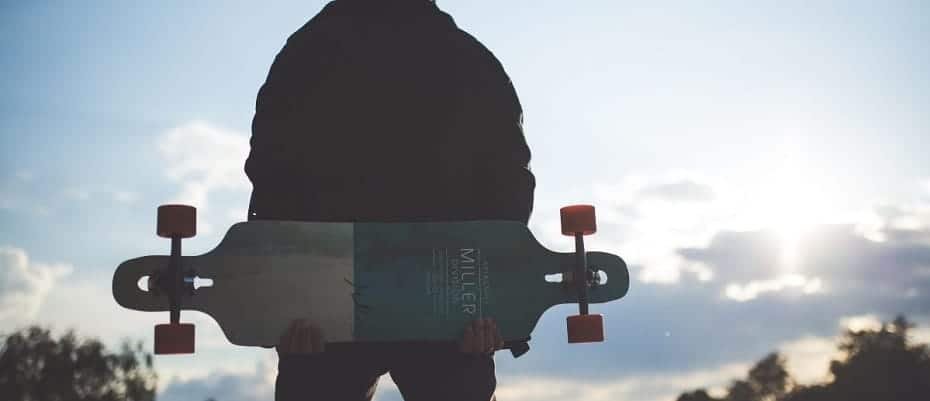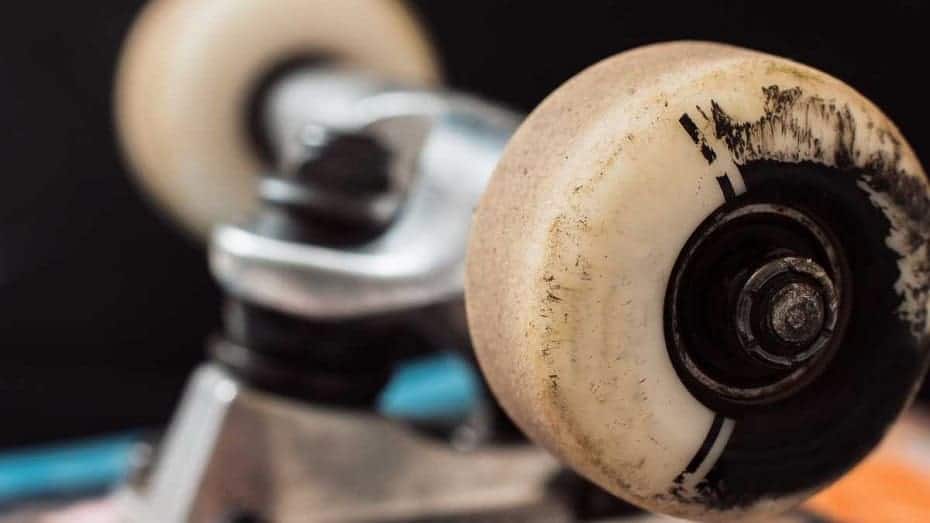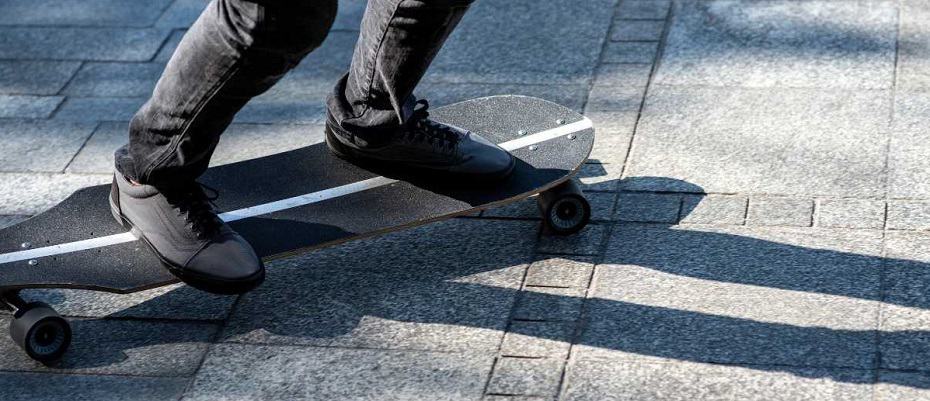
If you don’t know already, a longboard is just a type of skateboard that usually serves a different purpose than standard skateboards or caster boards. Unlike other types, longboards are meant for stuff like long-distance skating, cruising or downhill racing.
As the name implies, the length of the deck is what makes it different from other types of boards. Of course, there are other characteristics too, but the length singlehandedly makes it more stable, making it perfect for cruising around by beginners.
As a beginner, if you are planning on buying a longboard, this article is for you. I’ll be answering can you do tricks on a longboard, how it’s done and break down different tricks for you. So without further ado, let’s begin.
Can You Do Tricks On A Longboard Really?
As I’ve already mentioned, longboards are usually meant for cruising. Longboards showed up in the late 1900s, and since then, it has been a popular choice among skaters for its versatility. As a beginner, if you want to cover cruising and tricks with one single board, that’s definitely possible with a longboard.
If you have prior knowledge about skating, you might already know that regular skateboards are usually used as dedicated tricks. The deck, truck, wheel and other parts are manufactured accordingly for performing tricks.
Initially, it might be a little challenging to perform tricks with a longboard, but it’ll get easier eventually with practice. The length will be the key challenge, but over time, you can overcome it.
Longboard also has categories of its own. Among different types, there are a few that are widely popular and used worldwide.
Read: How hard is it to do tricks on a cruiser?
Drop-through boards are the most common type of longboards out there. The trucks on drop-through boards are mounted through the deck, hence the name drop-through. These boards offer a few benefits like more stability at higher speed, easier breaking, pushing and sliding.
Then comes the pintail longboards. Unlike drop-through longboards, pintail have trucks mounted below the deck. Additionally, the pintail shape prevents any sort of wheel bite. If you are into speed boarding, you should check this out.
The last one is the cruiser longboard. At the beginning of their skateboarding journey, I think everyone, at least once, have used this type of longboard. Cruisier longboards are a totally different breed of skateboard designed for cruising only, neither for fast downhill longboarding nor specialized for tricks.
While all these longboards has similar purposes, one thing is common is their trick compatibility. All of these can handle some basic to mid-level tricks. But if it’s advanced tricks and dedicated trick-board you are after, the longboards aren’t an ideal choice for you.
Skateboard Or Longboard Which One Is Better For Tricks?
To answer this question, I’ll discuss the differences between these two first. Then, once you know the difference, you can figure out the answer all by yourself.
First of all, the purpose is different for both. Longboards are mainly used for cruising, while the skateboards are a great option to explore every type of skating, including tricks.
Then, the longboards tend to be longer than traditional skateboards, making them heavier and more challenging to turn and flip. The trucks are an essential part of any board. In skateboards, the trucks are more durable, making it easier to perform tricks.
Lastly, the wheels on skateboards are smaller compared to longboards, making them easier to balance. From the comparison above, you can see that skateboards are the go-to choice for tricks. However, longboards can also cover a decent amount of tricks. Therefore, if you are not into dedicated skateboard for tricks, then longboards should be enough for you.
Read: How many calories can you burn longboarding?
What Tricks We Can Do Using A Longboard?
If you’ve read the blog until this point, then you might already know that basic tricks are possible with longboards.
In this part, I’ll introduce you to some basic longboarding tricks for beginners you can easily perform on your longboard. I tried to pick the simplest tricks possible so that you can learn them faster afterwards. These tricks will also make it easier to learn more advanced ones in future.
Ollie
I think this is the most common trick in any skateboarder’s book. This one is so easy that expert skaters don’t even consider it a trick. Ollie is basically jumping with your board by pulling off the board. The majority of tricks in skating involve jumping, so learning Ollie can be considered the first step of getting into longboard tricks.
Kickflip
Kickflip is another fundamental trick that unlocks the door to different advanced tricks. It’s easy to learn, and if you invest a few days, you can easily master this trick. In kickflip, skaters launch the board in air with their feet and flip the board 360 degrees.
Pivot
Pivot is a great trick to learn the balance and to understand the sudden momentum change of your skateboard. Pivot is basically just changing skateboard’s and your position by a 180-degree turn. If you want to learn the shuvit, which I’ll discuss later, you’ll have to learn pivot first.
Shove-It/ Shuvit
The technique of pulling off a shuvit is identical to the pivot. If you have managed to learn the pivot already, you will learn it in no time. The key difference between pivot and shuvit is how you make that 180-degree turn. Unlike in pivot, the turn is done with a jumping motion in case of shuvit.
Ghostride And Ghostride Kickflip
These are two similar tricks that mainly depend on timing. Among the tricks I mentioned, this is the toughest to master. But again, practice is the key here. Ghostriding is basically getting off the board, moving along and then getting back on the board again. While getting back, you can do a kickflip, which is known as ghostride kickflip.
How To Do Tricks On A Longboard For Beginners? (Step By Step Guide)

In the previous segment, I discussed shortly about some basic tricks you can perform with your longboard. In this part, I’ll be breaking down the techniques in a step-by-step guide so that you can understand and learn them faster.
Guide To Ollie
- Step 1: Foot positioning is pretty important for this trick. Place the front foot at the middle and the back foot at the back end of your longboard.
- Step2: To lift the board, push the back end with your back foot. It’ll launch the board in the air.
- Step 3: As you kick down the back end, jump along with the skateboard, sliding the front foot towards the front of the board.
- Step 4: As soon as you feel the front of the board has reached the highest point during the jump, kick the front to level the board.
- Step 5: When the board becomes parallel, straighten your leg and keep your feet over the wheel area to land perfectly.
Guide To Kickflip
- Step 1: Place your feet similarly as you did with Ollie. As both tricks involve jumping, the feet position will be identical.
- Step 2: Lift the board by kicking the tail area down.This time add alittle flick to create a slight angle.
- Step 3: While the front of the board is in the air, slide your front foot backward. This slide and angular kick to the tail will allow the spin to happen.
Read: How to Make Longboard Wheels Spin Longer?
- Step 4: As the front went up first, you have to catch with the rear foot first, then with the front foot. Feet positioning for landing will be the same as Ollie’s.
Guide To Pivot
- Step 1: Start by placing your front foot on the nose of the board to increase the weight of that part. This weight will determine the wheel drag during the trick.
- Step 2: Place the back foot on the middle of the board.Now engage your lower back and shoulder to start putting pressure on the nose area.
- Step 3: Now twist the board 180 degrees to reverse the front and back tail position.
- Step 4: After the twist, your back foot is now your front foot. So push down with that foot at the middle of the board to rebalance it
Guide To Shuvit
- Step 1: Place your feet similarly you did for the pivot.As I mentioned before, this one will be pretty identical to pivot.
- Step 2: As shuvit is a jumping version of the pivot, you have to put more pressure on the nose area to raise the back of the board. That push by the back foot will make the board jump.
- Step 3: Now that the back is raised, let go of the board to allow the 180-degree turn to happen.
- Step 4: The foot’s position will be normal this time as you are landing after the jump.
Guide To Ghostride/ Ghostride Kickflip
- Step 1: Start with the normal skating stance.While riding, bring your back foot in the front by crossing the front foot.
- Step 2: After you bring the back foot forward, jump off the board and land with that crossed foot first.
- Step 3: Take exactly two steps along with the board. First with the crossed foot after landing, then with the front foot.
- Step 4: Get back on the board. While landing back, try to land on the back foot on the tail of the board.
- Step 5: If you are performing ghostride kickflip, flip the board with the toes of your back foot. After a 360-degree flip land like it’s described in step 4.
Last Words…
That’s a wrap for today. I hope I have answered all the questions skaters, especially beginners, have about longboard tricks.
So, can you do tricks on a longboard? As you have seen throughout the article, it’s very much possible to perform tricks alongside cruising. Additionally, the trick guide will help you learn those tricks in no time.



